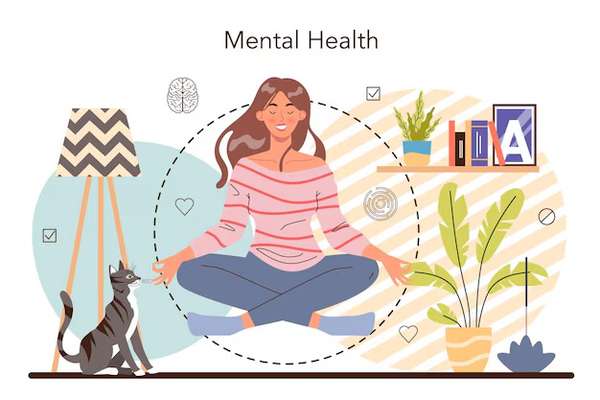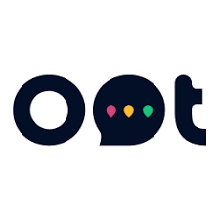10 Positive Effects of Technology on Mental Health
Introduction
In recent years, technology has transformed various aspects of our lives, including how we approach mental health care. The advent of digital tools, apps, and online platforms has revolutionized the accessibility, delivery, and efficacy of mental health services. These innovations have made it possible for individuals to seek support and treatment from virtually anywhere, breaking down traditional barriers and fostering a more inclusive approach to mental well-being. This blog by OOt Social Health explores the numerous positive effects of technology on mental health, highlighting how it enhances access to resources, reduces stigma, and provides personalized care, ultimately contributing to improved mental health outcomes for people worldwide.
Bridging the Gap in Mental Health Services
One of the most significant advantages of technology in care is its ability to bridge gaps in services. Traditional care often faces barriers such as geographical limitations, high costs, and long waiting times. Technology, however, overcomes many of these obstacles. For instance, teletherapy and online counselling services allow individuals to connect with licensed therapists regardless of their location. This is especially beneficial for those living in rural or remote areas where these services may be scarce. By reducing these barriers, technology ensures that more people can access the care they need when they need it.
Reducing Stigma and Increasing Mental Health Awareness
Technology also plays a crucial role in reducing the stigma associated with mental health issues. Online platforms and social media campaigns can reach a broad audience, spreading awareness and normalizing conversations Educational websites, podcasts, and webinars provide valuable information on conditions, treatments, and coping strategies. Increased awareness leads to better understanding and empathy, encouraging more individuals to seek help without fear of judgment.
Personalized Mental Health Care
The integration of artificial intelligence (AI) and machine learning in mental health care is paving the way for personalized treatment plans. AI can analyze vast amounts of data to identify patterns and predict outcomes, helping clinicians tailor interventions to each individual’s unique needs. For example, AI-powered chatbots can provide real-time, personalized support and monitor users’ mental health through regular check-ins. This personalized approach enhances the effectiveness of treatments and ensures that individuals receive care that is specifically suited to their conditions and circumstances.
Supporting Youth Mental Health
Youth and adolescents are particularly receptive to technology-based mental health interventions. Apps, online games, and virtual reality (VR) experiences designed for mental health can engage younger users in ways that traditional methods may not. These technologies make care more accessible and less intimidating for young people. Schools and educational institutions are increasingly incorporating these tools into their programs, providing students with the resources they need to manage their well-being proactively.
1. Access to Resources
Technology has democratized access to mental health resources. Online platforms, apps, and telehealth services allow individuals to connect with mental health professionals from the comfort of their homes. This accessibility ensures that people in remote or underserved areas can receive the support they need.

2. Online Support Communities
Online forums and social media groups provide spaces where individuals can share their experiences and offer support to one another. These communities foster a sense of belonging and reduce feelings of isolation by connecting people with similar challenges and interests.
3. Mental Health Apps
A variety of apps are available to help manage anxiety, depression, and stress. These apps offer features such as mood tracking, guided meditation, cognitive-behavioural therapy (CBT) exercises, and mindfulness practices. They provide users with tools to manage their mental health on a daily basis.
4. Teletherapy and Online Counseling
Teletherapy and online counselling have made it easier for people to access professional services. Virtual sessions offer the same level of care as in-person visits, with the added convenience of eliminating travel time and reducing the stigma associated with visiting a therapist’s office.
5. Educational Resources and Awareness
The internet is a vast source of information on mental health topics. Websites, webinars, and online courses educate individuals about conditions, treatment options, and coping strategies. Increased awareness and knowledge can empower people to seek help and support others.
6. Crisis Intervention
Crisis intervention services, such as text lines and chatbots, provide immediate support to individuals in distress. These services offer a critical lifeline for those experiencing a crisis, providing them with instant access to trained professionals and resources.
7. Remote Monitoring and Treatment
Wearable devices and remote monitoring tools allow for continuous tracking of mental health indicators such as sleep patterns, physical activity, and heart rate. These tools can provide valuable data to healthcare providers, enabling personalized treatment plans and early intervention.
8. Enhanced Mental Health Communication with Providers
Technology facilitates better communication between patients and healthcare providers. Patients can easily schedule appointments, ask questions, and receive follow-up care through secure messaging systems. This ongoing communication improves the continuity of care and patient outcomes.
9. Virtual Reality Therapy
Virtual reality (VR) therapy is an emerging treatment for various mental health conditions, including PTSD, anxiety, and phobias. VR provides immersive experiences that can help individuals confront and manage their fears in a controlled, therapeutic environment.
10. Gamification and Mental Health
Gamification techniques are being used to make interventions more engaging and effective. Games and interactive activities can motivate individuals to participate in therapy, practice coping skills, and adhere to treatment plans. This approach can be particularly beneficial for children and adolescents.
Conclusion
Technology has significantly impacted mental health care, providing new tools and resources that enhance accessibility, support, and treatment. From teletherapy to apps, the positive effects of technology are helping individuals manage their well-being more effectively and conveniently. As technology continues to evolve, its potential to improve mental health outcomes will likely expand, offering even more innovative solutions for those in need.
The post 10 Positive Effects of Technology on Mental Health appeared first on OOt Social Health .
Full content in OOt





